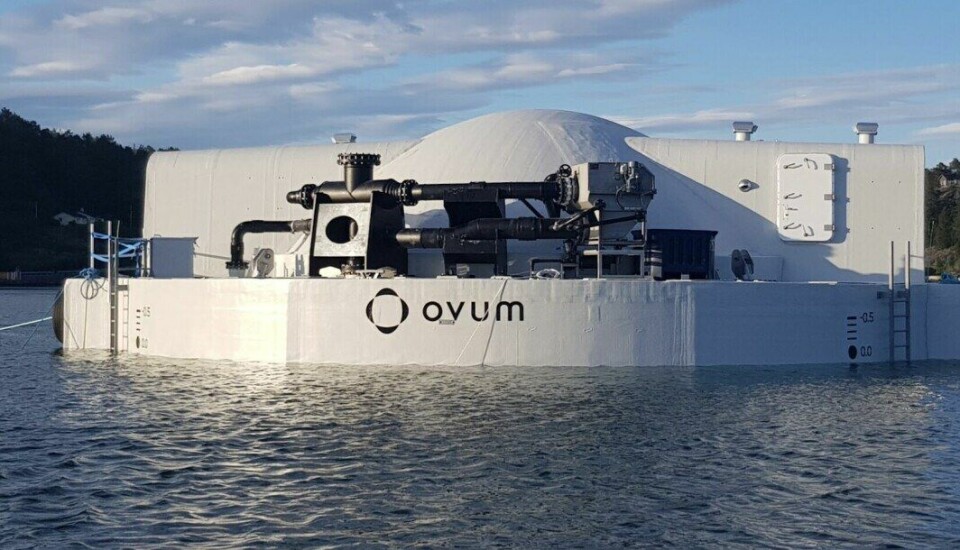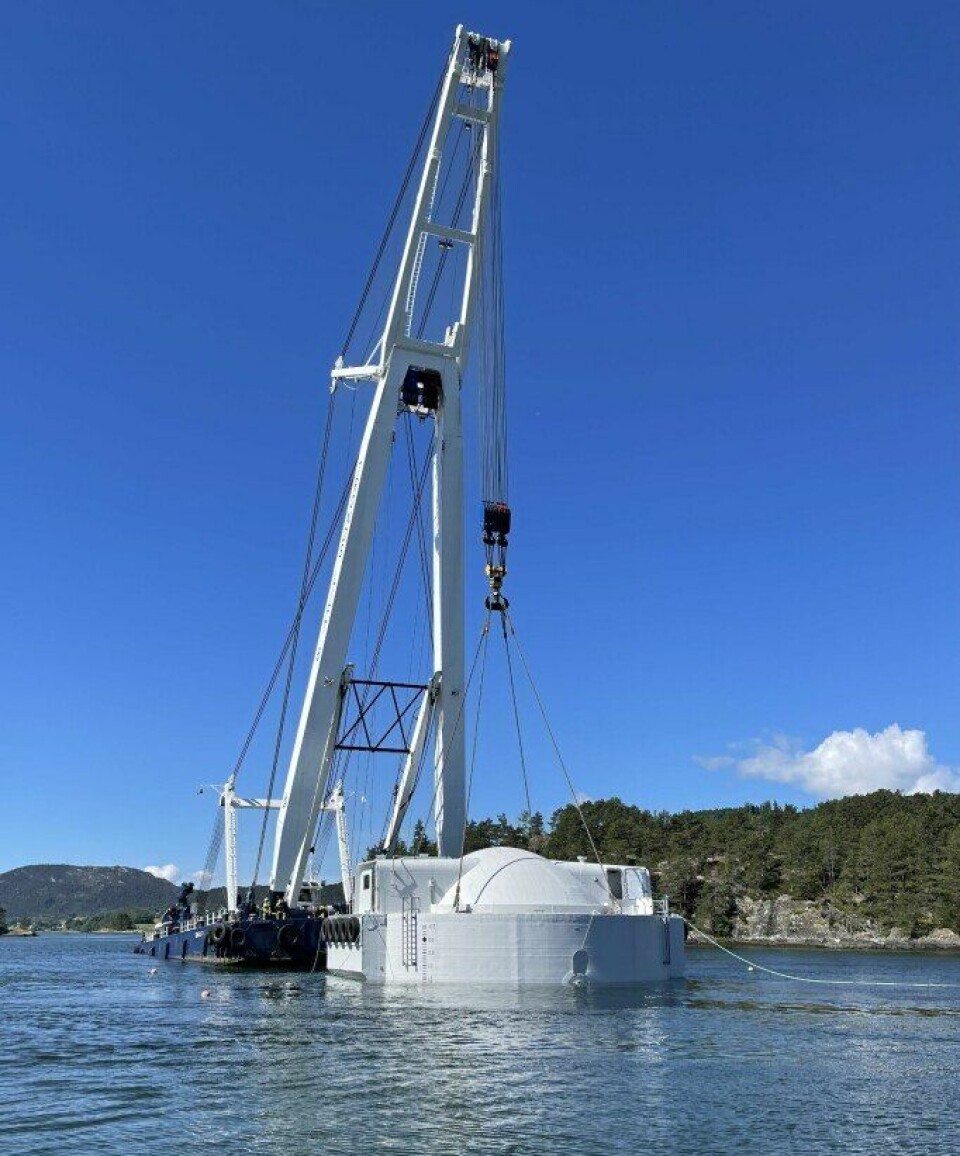
MiniEgg laid in the water
A 21-metre-high floating closed containment salmon farm built for Norwegian sustainable aquaculture company Hauge Aqua has been placed into the water for the first time.
The “MiniEgg” is a trial version of Hauge Aqua’s Egg, which will be 44-metres high and have 10 times the volume of the MiniEgg’s 1,850 m³.
Final tests will now take place on the Mini-Egg before it is towed approximately 600 kilometres north from Ølve in Hardangerfjord to Gjermundnes in Romdalsfjord in Møre og Romsdal county.

On schedule
Kristine Moldenhauer Biseth, development manager and co-owner of Herde Kompositt, which constructed the MiniEgg, said the transfer to the water from the company’s yard on the shore of Hardangerfjord went as planned, on a day with a cloudless sky and a calm sea.
“Together with [lifting contractor] Tronds Marine and our well-drilled employees, the operation kept to schedule and went painlessly. The Egg was placed in the sea at the scheduled time. I would say it was very successful as this was an operation that was new to all parties involved,” Moldenhauer Biseth told Fish Farming Expert’s sister site, Kyst.no.
Weather window
Åsmund Hellesøy, technical director of Hauge Aqua’s technical subsidiary, Ovum, said those involved had worked for a long time to get the MiniEgg to this stage.
“It’s wonderful to see the Egg in the sea in its proper element. The last part of the start-up of systems is now being carried out, as well as tests through this and next week. The transport starts approximately July 4, but many factors come into play, including the weather window,” said Hellesøy.

Iceberg effect
The operation to put the MiniEgg in the sea included filling it with water, which took almost two hours. Seeing that the Egg floated, said Moldenhauer Biseth, was incredibly satisfying.
“It has been an exciting project for us, and we have always looked forward to this goal,” said Moldenhauer Biseth.
“That we have now reached that goal and the project is very close to completion, gave us all a good feeling. It was also very fascinating to see it lying there in the sea and floating. It is now that we finally get to see the ‘iceberg effect’ of the construction. Most of the Egg is now under the sea and not as towering as when it was on the quay here with us in Ølve.”
Post-smolts
Tests are now being carried out that couldn’t be done until the Egg was in the sea.
The MiniEgg is expected to be used for growing post-smolts to one kilo before transfer to net pens and can also be used for broodstock in the last part of the sea phase. The full-sized Egg can be used for grow-out.
Water is drawn into the bottom of the Egg and circulates upwards. At the top it is filtered before being released back into the sea.






















































